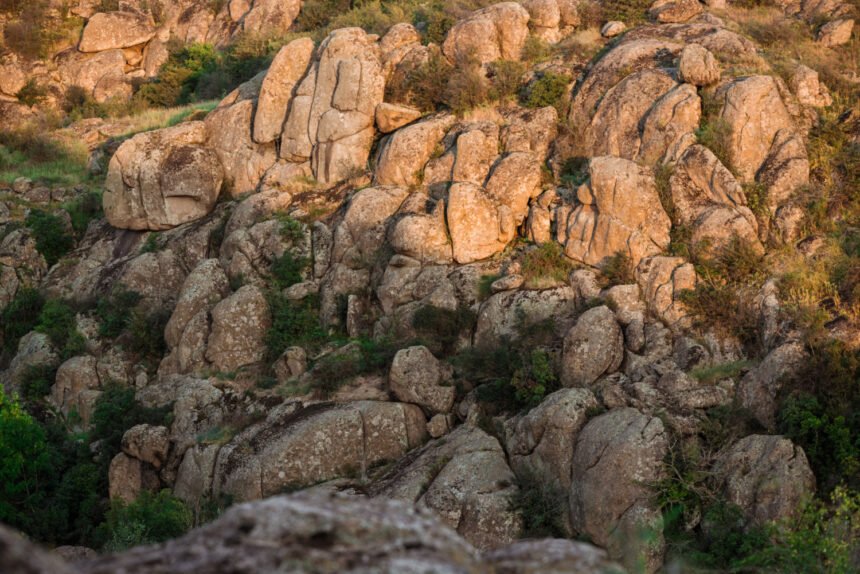⫸ Introduction to Rocks
The world beneath your feet teems with secrets, whispered in the language of stone. Rocks aren’t just a part of the landscape – they chronicle the dynamic history of our planet. From the fiery origins of igneous rocks, born in the heart of volcanoes, to the layered tales told by sedimentary rocks, each type of rock reveals a chapter in Earth’s epic story.
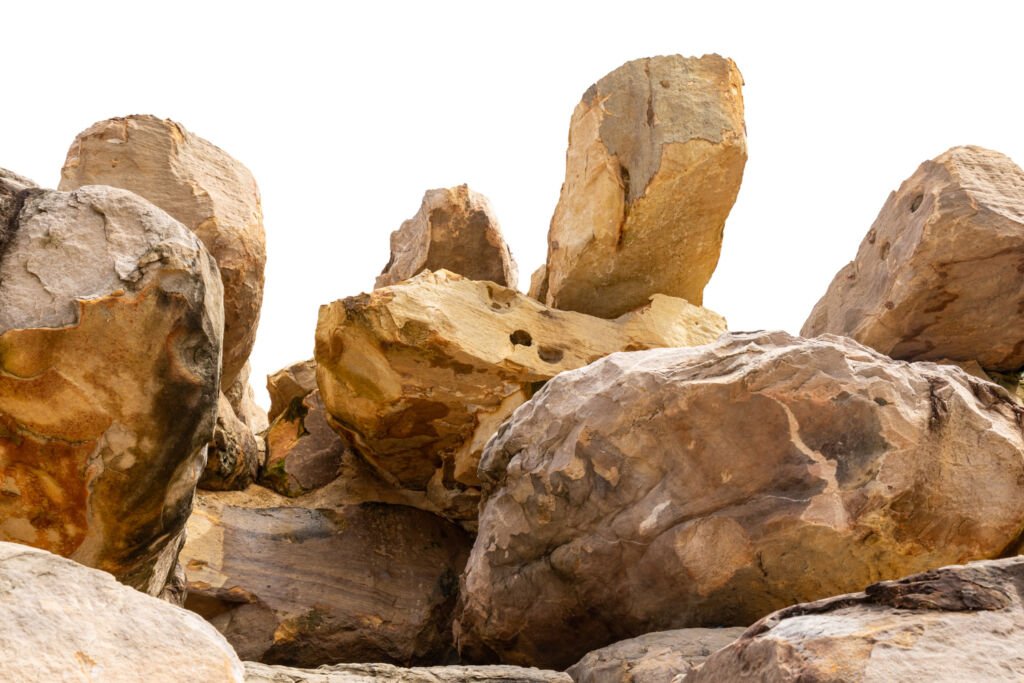
Imagine tracing the journey of a single grain of sand, transformed by pressure and time into metamorphic rock – a testament to the Earth’s relentless power. The different types of rocks are like puzzle pieces, and geologists are the detectives who decipher them. They study the textures, minerals, and the very structure of these formations.
Some rocks guard the fossilized remains of long-extinct creatures, while others were forged under the crushing weight of ancient glaciers. Whether they form grand mountain ranges or smooth pebbles tucked in a riverbed, the types of rocks shape our landscapes and influence how we interact with the Earth.
⫸ What are Rocks?
Rocks are naturally occurring, solid masses of one or more minerals with a definite shape, volume, physical and chemical composition. Rocks can range from tiny pebbles to massive boulders.
Minerals: Minerals are the building blocks of rocks. They are naturally occurring substances with a specific chemical composition and a distinct crystal structure (an organized arrangement of atoms).
⫸ Types of Rocks
Types of rocks depend on different qualities of rocks – origin, parent material, physical properties, chemical composition etc. Rocks are broadly classified into three categories based on their origin:
1. Igneous Rocks
Origin: Igneous rocks form from the cooling and solidification of molten rock deep within the Earth. When it’s beneath the surface, this molten material is called magma, and when it erupts, it is lava.
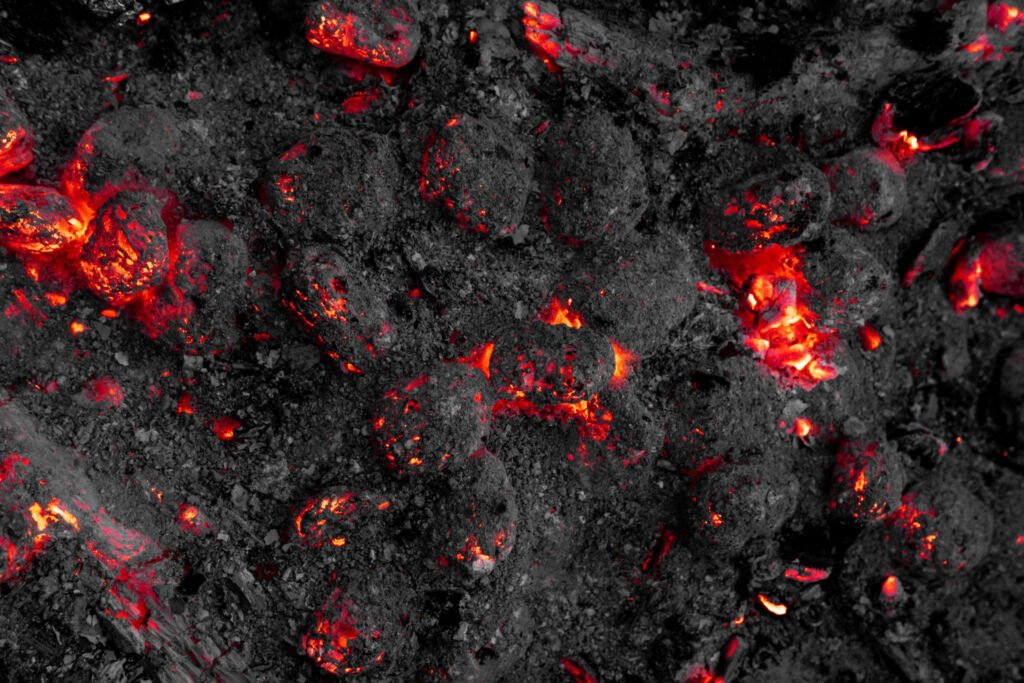
Types:
- Intrusive: Formed when magma cools slowly inside the Earth’s crust, creating coarse-grained rocks like granite.
- Extrusive: Formed when lava erupts and cools rapidly above the Earth’s surface, leading to fine-grained rocks like basalt.
Examples: Granite, basalt, obsidian, pumice
2. Sedimentary Rocks
Origin: Sedimentary rocks are formed from the accumulation and cementation of sediments, which are fragments of preexisting rocks, minerals, shells, or organic matter, often carried by wind, water, or ice.
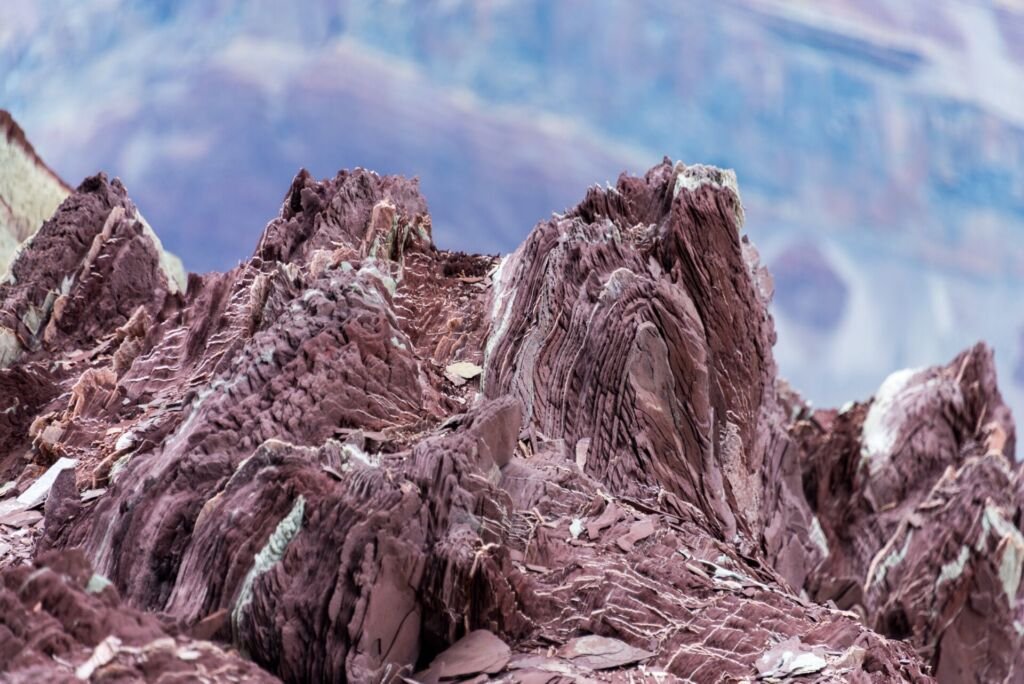
Types:
- Clastic: Formed from cemented rock fragments (clasts), like sandstone and shale.
- Chemical: Formed from minerals dissolved in water that later precipitate, like limestone and rock salt.
- Organic: Composed of organic matter like plant and animal remains, such as coal.
Examples: Sandstone, limestone, shale, coal
3. Metamorphic Rocks
Origin: Metamorphic rocks are formed when existing igneous or sedimentary rocks undergo intense heat, pressure, or chemical changes, altering their original structure and mineral composition.
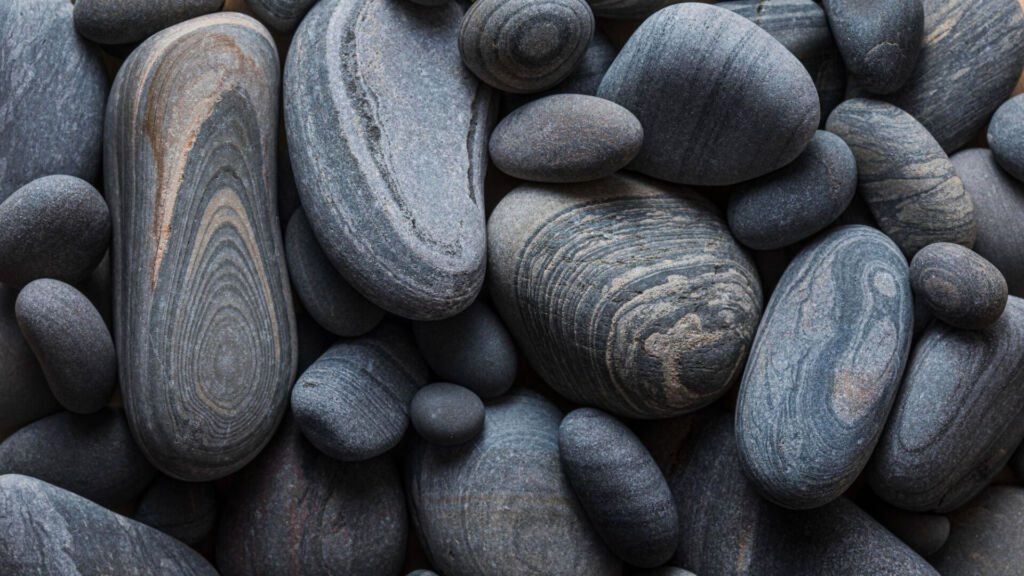
Types:
- Foliated: Exhibiting a banded or layered appearance due to pressure, like gneiss and schist.
- Non-foliated: Not layered, such as marble and quartzite.
Examples: Marble, quartzite, gneiss, slate
⫸ Common Metamorphic Rocks, along with their typical source rocks
Metamorphic Rock | Source Rock(s) |
Marble | Limestone, Dolomite |
Quartzite | Sandstone |
Slate | Shale, Mudstone |
Phyllite | Shale, Mudstone (slightly higher-grade metamorphism than slate) |
Schist | Shale, Mudstone, Basalt, Tuff (volcanic ash) |
Gneiss | Shale, Granite, other igneous rocks |
Hornfels | Various rock types (contact metamorphism) |
Serpentinite | Peridotite, other ultramafic rocks |
Soapstone | Talc-rich ultramafic rocks |
Amphibolite | Basalt, Gabbro |
Migmatite | Partially melted gneiss or other high-grade metamorphic rocks |
⫸ What is Rock Cycle?
The three types of rocks are not isolated from one another. The rock cycle demonstrates a continuous process where one rock type can transform into another.
It’s a never-ending loop where one type of rock can be broken down and transformed into another, influenced by forces like heat, pressure, weathering, and erosion. For instance,
- Igneous rocks can weather and erode into sediments, leading to sedimentary rock formation.
- Sedimentary and igneous rocks can undergo metamorphism to produce metamorphic rocks.
- Metamorphic rocks can melt, creating magma that cools into igneous rocks.
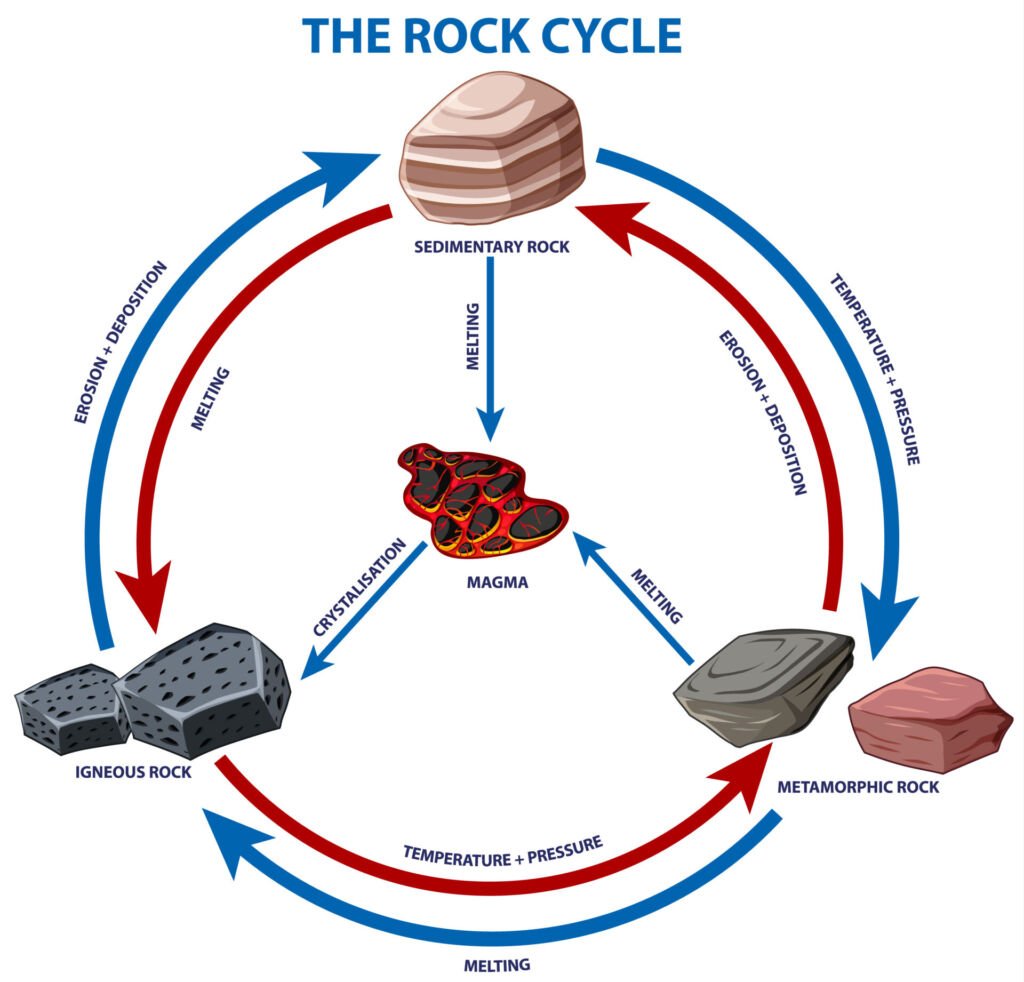
The stages of the Rock Cycle are –
1. Weathering and Erosion
- Existing rocks at Earth’s surface are exposed to the elements – wind, rain, ice, and freezing/thawing cycles. These forces break down the rocks into smaller fragments (sediments) like sand, pebbles, or dissolved minerals.
- Wind, water, and glaciers then transport these sediments, carrying them away from their source.
2. Sedimentation and Lithification
- Transported sediments eventually settle in layers at the bottoms of lakes, oceans, or other low-lying areas. Over time, these layers get buried deeper and deeper by newer sediments.
The immense pressure from these overlying layers compacts the sediments, squeezing out water and air spaces between them. Minerals dissolved in water can also precipitate and cement the sediments together. This transformation process from loose sediment into solid rock is called lithification.
3. Metamorphism
- Rocks, whether igneous, sedimentary, or even pre-existing metamorphic rocks, can be subjected to intense heat and pressure within the Earth’s crust. This can happen due to tectonic plate collisions or burial deep beneath the surface.
- The heat and pressure cause physical and chemical changes in the rock, potentially recrystallizing minerals or creating entirely new ones. This process alters the texture and structure of the rock, resulting in a metamorphic rock.
4. Melting and Igneous Intrusion
- Under extreme heat and pressure conditions, especially near the mantle (the layer below the Earth’s crust), existing rocks can melt, forming molten rock called magma.
- If the magma remains trapped underground, it cools and crystallizes slowly, forming intrusive igneous rocks like granite.
- However, magma becomes lava if it breaks through the Earth’s surface in a volcanic eruption. As lava cools and solidifies rapidly above ground, it forms extrusive igneous rocks like basalt.
5. Uplift and Erosion
Over vast periods, geological forces can cause buried rocks to be uplifted, pushing them closer to the Earth’s surface. These uplifted rocks are then exposed to weathering and erosion once again.
⫸ Importance of Rocks
Although different types of rocks are found in and on the earth’s surface, all of these have common importance.
- Rocks preserve fossils and geological structures, recording ancient environments, past life forms, and major geological events.
- Studying rocks helps us understand how continents formed, how mountain ranges rose, and how the Earth’s crust continues to evolve.
- Many rocks contain valuable minerals that are essential for various industries.
- Used as building materials (e.g., granite, limestone, marble), road aggregates, and concrete production.
- Minerals extracted from rocks find uses in everything from electronics and cars to cosmetics and fertilizers.
- Coal is a sedimentary rock that’s a significant fuel source. Oil and natural gas form within certain types of sedimentary rocks.
- Sculptors value certain rocks like marble and soapstone, and many rocks contain minerals used as pigments.
- The weathering of rocks contributes to forming fertile soil, essential for plant growth.
- Rocks provide surfaces for attachment and specialized niches for many organisms, fostering biodiversity.
- Porous rocks can act as natural filters for groundwater. Rock formations create breathtaking landscapes, inspiring awe and drawing tourists.
- Rocks are vital for studying a wide range of topics, from climate change to the origins of life.
⫸ Conclusion
The grand narrative of our planet isn’t written in words, but etched in the very foundation beneath us – the diverse types of rocks. Each rock formation, from the smooth marble sculpted by immense heat to the jagged granite forged in fiery eruptions, whispers a unique chapter in Earth’s story. Understanding these different types of rocks, their intricate formations, and the grand cycle that binds them unlocks a treasure trove of knowledge.
By delving into the secrets held within different rock types, we gain a deeper appreciation for the dynamic forces that have continuously reshaped our world. Studying sedimentary rocks, with their layered chronicles of ancient environments, allows us to glimpse into vanished oceans and sprawling deserts. Igneous rocks from the Earth’s molten heart offer clues to volcanic activity that sculpted mountains and ignited the planet’s fiery past. Metamorphic rocks, transformed by immense pressure and heat, speak of a relentless dance between change and resilience.
The more we unravel the stories embedded within these various rock types, the more we appreciate the intricate tapestry of our planet. They become not just silent observers, but active storytellers, revealing the incredible journey that has shaped Earth into the vibrant and ever-evolving world we know today.

